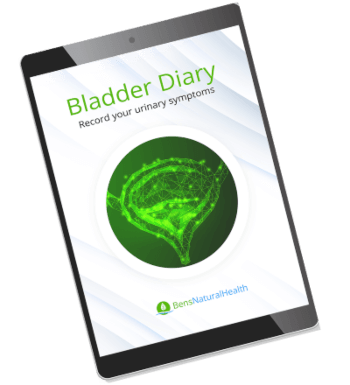Urination is a natural process to eliminate waste products from our bodies.
People usually pee 6 to 8 times a day. Nevertheless, this number can be less or more, depending on how much water you drink, your health condition, and many other factors.
Peeing too much (polyuria) and too little (oliguria) are both annoying, but producing no urine at all is on another level of severity.
This condition is called anuria, and it is a medical emergency that we will discuss in this article.
What is anuria?
A healthy person should have 800 to 2000 mL of urine output daily. Anuria means no urine.
From a medical perspective, the definition of anuria is a total urine output of less than 100 mL in a day or no urine at all in 12 hours.
Certain risk factors predispose you to have reduced urine volume, including oliguria and anuria. These factors are:
- Old age
- Dehydration
- History of kidney disease
- Existing health conditions, such as diabetes, heart failure, and liver disease
- Medications that constrict blood vessels, such as NSAIDs, tacrolimus, and cyclosporine
- Medications that are harmful to the kidneys, such as chemotherapy drugs, aminoglycosides, and radiocontrast agents
What’s the difference between anuria and oliguria?
Anuria is usually the most severe result of oliguria, defined as a total urine output of less than 400 mL in 24 hours.
With disease progression, the urine output can eventually decrease to 100 mL or less (anuria). The volume of urine output is the main difference between anuria vs oliguria.
Anuria and oliguria can be used as parameters to measure the severity of kidney injury. The commonly used KDIGO criteria used reduced urine output to stage acute kidney injury.
In stages 1 and 2 of kidney injury, you will have oliguria. If you have developed anuria, your kidney injury is already in the most severe stage (stage 3).
Wait no more and seek medical help immediately.
Is anuria serious?
While both oliguria and anuria are always linked to suboptimal health status, anuria is always serious and pathological.
Emergency medical treatments are required to prevent further deterioration and its severe consequences. They will be discussed in the later part of this article.

Accompanying symptoms
Anuria itself is a symptom (no or almost no urine). Depending on the underlying cause of anuria, one may experience other symptoms associated with the relevant diagnosis.
These symptoms include:
- Urinary symptoms: frequent urination, difficulty controlling the urge to pee, pain when urinating, blood in urine, frothy urine, difficulty in initiating urination, straining, weak flow of urine, frequent urge to pee at night, leaking urine (urinary incontinence).
- Fluid retention symptoms: leg swelling, abdominal distention (ascites), puffy eyes, nausea, confusion.
- Infection symptoms: fever, abdominal pain, and flank pain.
- Heart failure symptoms: palpitation, shortness of breath, fatigue, and weakness.
- Chronic liver disease symptoms: yellowish skin and eyes, nausea, vomiting, and comatose.
Many of these symptoms can occur in more than one differential diagnosis for anuria, and there are many more co-existing symptoms.
The only thing you must remember is to see a doctor if you experience anuria, even if you do not have any other symptoms.
What causes anuria?
Any interruption to urine production till expulsion can cause anuria. These anuria causes can be classified into pre-renal, renal, and post-renal.
Pre-renal
Pre-renal anuria happens when blood flow to the kidney decreases. Less blood is filtered, so less urine is produced.
Causes of pre-renal anuria include massive bleeding, severe dehydration, heart failure, and extremely low blood pressure (shock).
Renal
Conditions affecting the urine manufacturer (the kidneys) can cause anuria. Examples of kidney diseases include glomerulonephritis, Goodpasture syndrome, lupus nephritis, renal vein thrombosis, and acute rejection after renal transplantation.
Besides, certain medications can be harmful to the kidneys. These medications include but are not limited to nonsteroidal anti-inflammatory drugs (NSAIDs), angiotensin-converting–enzyme (ACE) inhibitors, amphotericin B, cephalosporins, and many chemotherapeutic drugs.
Post-renal
Post-renal anuria causes are always associated with obstruction of the urinary tract. It can be stones, compression by surrounding structures (enlarged prostate gland, tumors), and narrowing of the urinary tract due to adhesion or stricture.
Complications
Anuria can be fatal if it is not treated promptly. The most common condition associated with anuria is acute renal failure, where one’s kidney stops working.
Waste products such as urea and creatinine accumulate in our body, electrolyte and pH derange (hyperkalemia and metabolic acidosis), retent water leads to difficulty breathing (pulmonary edema), and the patient may encounter neurological complications such as seizures, confusion, and comatose.
In short, anuria is an emergency condition. If left unattended, it can damage almost all systems of the human body.
When to see a doctor
A decreased urine volume or reduced frequency of urination are the earliest signs of anuria.
Other than this, consider seeing your healthcare provider if:
- Your urine looks frothy, much darker than usual, or there is blood in the urine
- You have other symptoms such as vomiting, diarrhea, fever, dizziness, and a fast heart rate
- You are taking medications, supplements, or herbs that may harm your kidney

Investigation and diagnosis
When you visit your healthcare provider for severe anuria, emergency treatment (urinary catheterization) is usually given first before going through all detailed check-ups.
After clearing the retent urine and your condition has been stabilized, your doctor will ask you questions and arrange various tests to find out the underlying cause of your anuria.
These tests include:
- Blood tests to check for the level of waste products (creatinine, urea), electrolytes, and blood urea nitrogen in your body.
- Urinalysis to check for the urine’s appearance, concentration, and substances. It helps differentiate the common causes of reduced urine volume, such as urinary tract infections and kidney disease.
- Special tests for specific conditions, such as autoimmune antibodies tests to rule out lupus-induced kidney disease.
- Radiological scans, including kidney doppler ultrasound and CT scanning of the abdomen. They mainly help detect causes of urinary flow obstructions, such as stones, tumors, and an enlarged prostate gland.
Treatment
Treatment of anuria aims for two goals: first, to resolve the acute urinary retention, and second, to cure or control the underlying cause of anuria.
Here, we focus on what you should expect when seeking emergency treatment for anuria.
Urinary catheterization
If you have a full bladder but fail to expel the urine, your healthcare provider will likely insert a Foley catheter into your urethra to drain the urine.
Depending on the site of obstruction, you may need a suprapubic catheter. Your doctor will cut a small hole in your lower abdomen and insert the catheter directly into your bladder.
For those already on urinary catheterization, the cause of anuria can sometimes be extremely simple; the catheter tube is kinked, clogged, or malfunctioning.
Therefore, manipulating, rinsing, or changing a new catheter can resolve the problem immediately.
Fluid resuscitation and monitoring
If the cause of anuria is pre-renal (reduced blood volume), fluid resuscitation will be the first treatment step, especially when you have extremely low blood pressure.
Your healthcare providers will insert a needle into your hand or arm, and fluids will be directly infused into your bloodstream.
Your body fluid input (total volume of water drank and fluid infused) and output (volume of urine collected in the urine bag) will be closely monitored hourly.
Medication adjustment
Your doctor will review all medications that you are taking. Medications that might be harmful to the kidneys or require an intact renal function to excrete will be discontinued.
After resolving the acute issue (anuria), you may need new medications or an adjusted dosage of your old medicines.
Get your FREE bladder diary
- Daily bladder diary
- Better understand your urinary symptoms
- Step-by-step guide
How can I prevent anuria?
Anuria has many causes, and there is no one-size-fits-all way to prevent it. Nevertheless, there are several principles you can follow to minimize your risk of having anuria.
- Ensure adequate fluid intake. Men should drink about 3.7 L of fluids and women about 2.7 L daily. This amount includes water from food and drinks. Drink more water when you are running a fever, diarrhea, vomiting, or sweating a lot when exercising or in hot weather.
- Control your other medical conditions. Adhere to advice from your healthcare providers, comply with the treatment plan, and have regular health checks.
- Avoid self-prescribing medications. Many medications are processed and excreted by the kidneys. Taking these medications can increase the kidney’s workload and further worsen kidney conditions.
- Optimize your general health. Just like any other disease, improving your general health condition protects you from diseases associated with anuria. Exercise regularly, maintain a healthy diet pattern, and quit bad habits such as smoking and excessive alcohol intake.
Conclusion
Anuria is a health emergency. Stay alert and seek medical attention when earlier signs appear, i.e., when you have reduced urine volume with or without other symptoms.
Explore More








